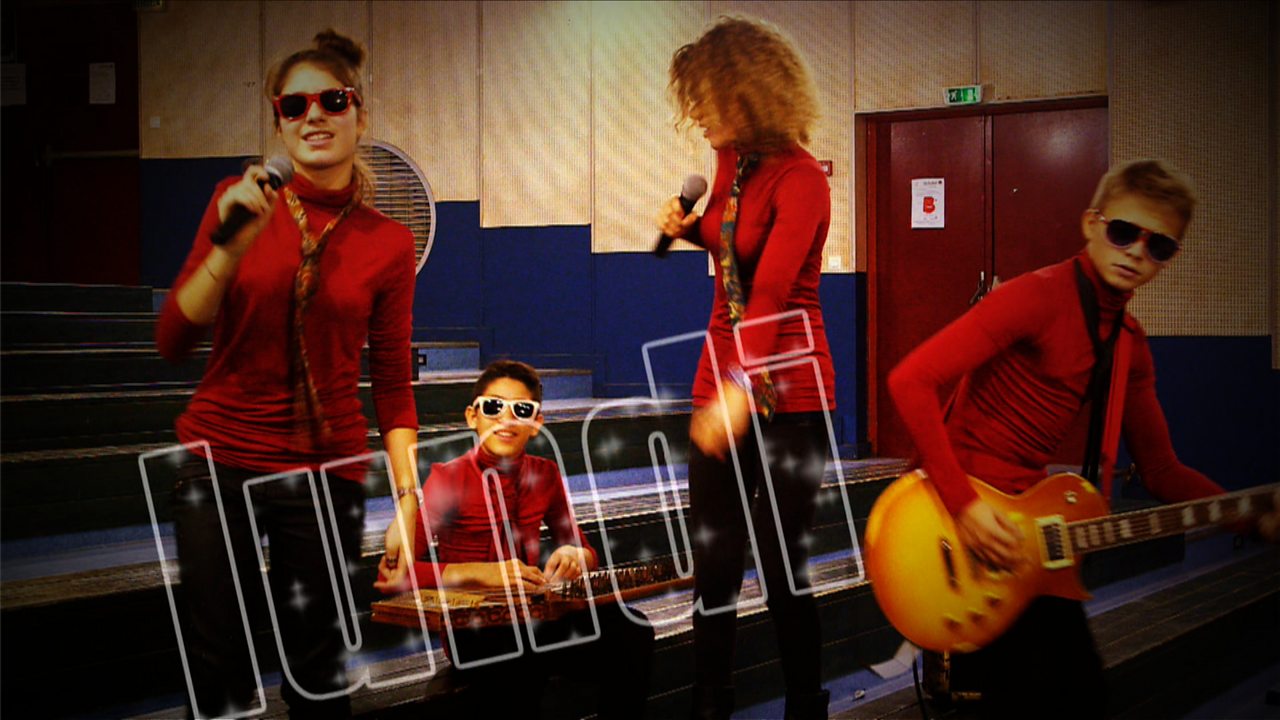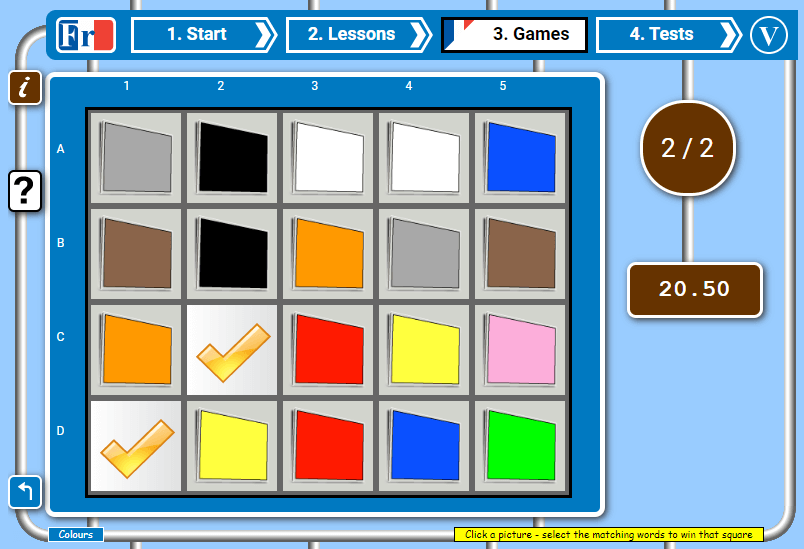8 of the best MFL resources for KS2 French

Whether you're teaching your primary students numbers, colours, places, days of the week or body parts, these worksheets, lesson plans and activities will help them speak fluent French from lundi à vendredi…

- by Lloyd Burgess
- Former editor of Teachwire
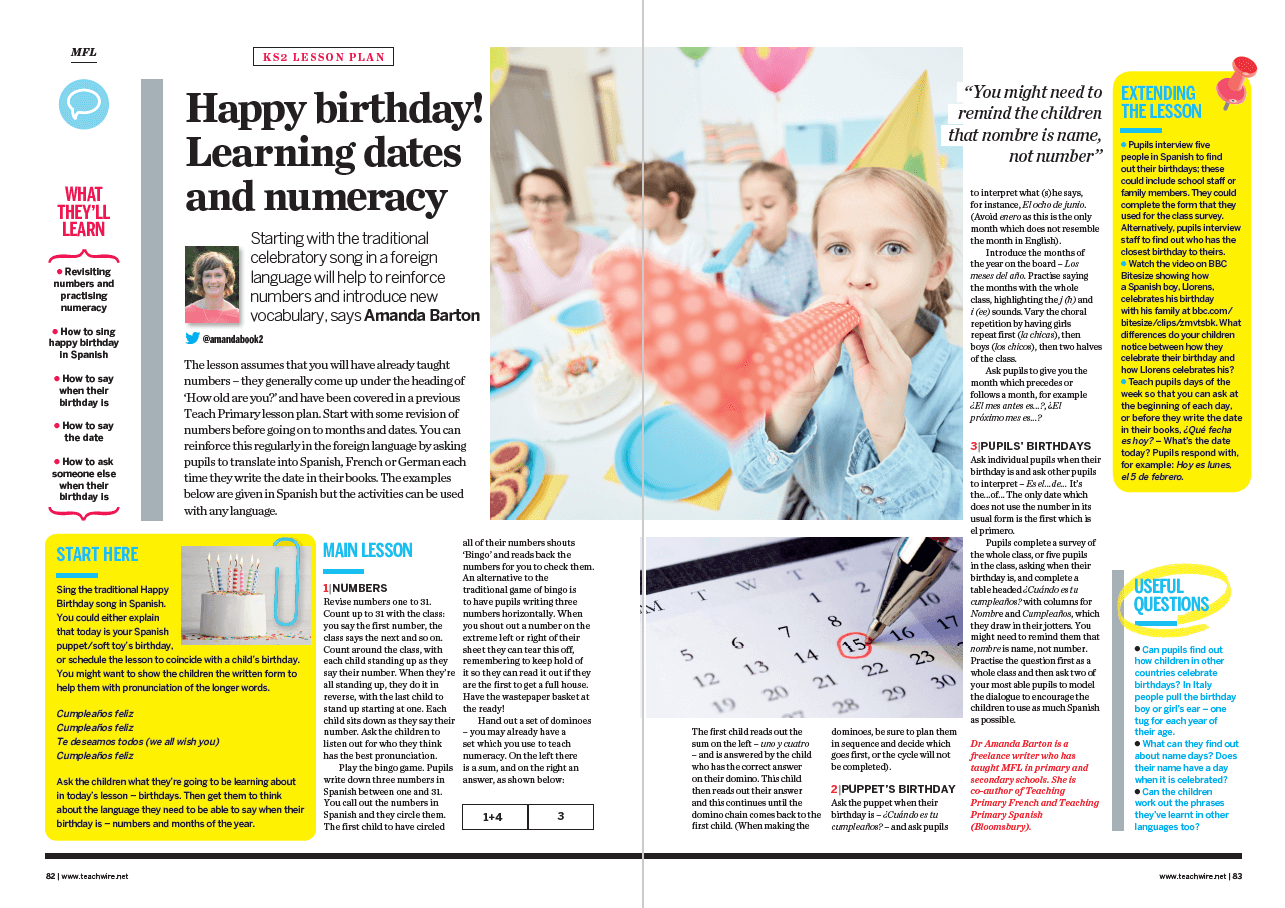
For many of us, learning a foreign language was a bit like Eddie Izzard’s famous standup bit (which is well worth 6 minutes of your time if you’ve never seen, but there are a few swears, so it’s not safe for work without headphones), repeating lines like ‘Où est le stylo rouge?’ and ‘J’ai mangé une pomme’.
I remember 12-year-old me sitting in class moaning ‘Why do I need to speak French? I’m never going to France’. None of it seemed relevant.
A quarter of a century later I sit here having been many times, being totally in love with the place, and wishing I could speak French.
Granted, I’ve never once had to get directions to la discothèque.
Today, language learning is a lot better, and there are way more options and opportunities for doing it.
So until the day the Brexit brigade try to ban all mention of things on the continent, here are some great MFL resources to help primary students get to grips with French.
1 | Sing birthday songs to learn dates and numeracy
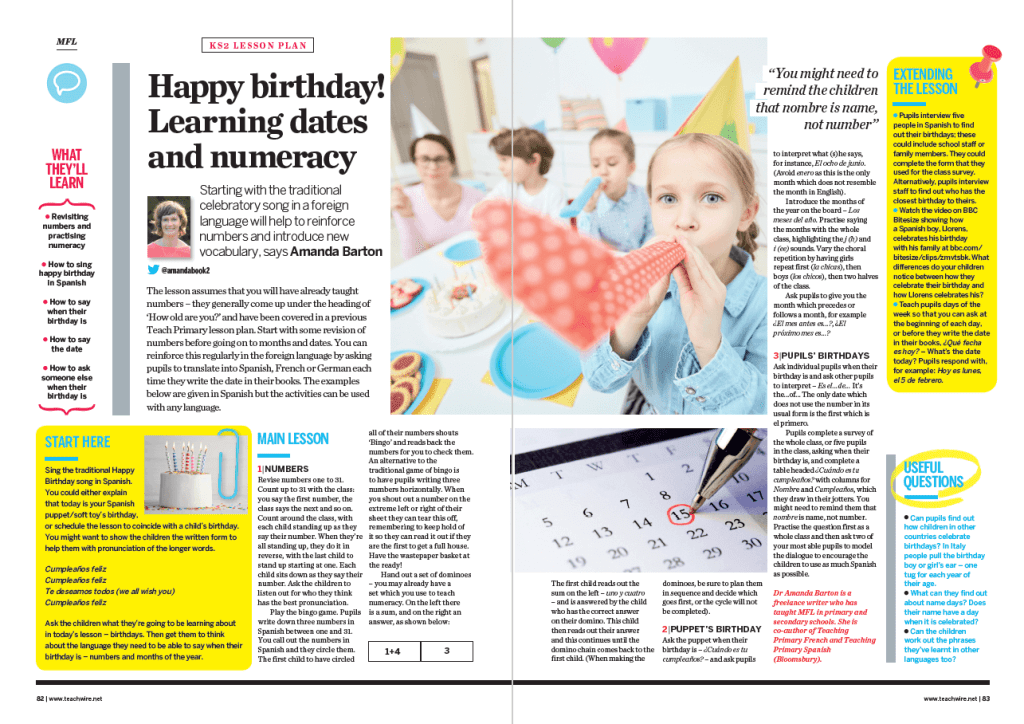
Starting with the traditional celebratory song in a foreign language will help to reinforce numbers and introduce new vocabulary.
The lesson assumes that you will have already taught numbers – they generally come up under the heading of ‘How old are you?’ and have been covered in a previous Teach Primary lesson plan.
Start with some revision of numbers before going on to months and dates. You can reinforce this regularly in the foreign language by asking pupils to translate into Spanish, French or German each time they write the date in their books.
The examples in this lesson are given in Spanish but the activities can be used with any language.
2 | Virtual learning
This 10-part BBC series is a compilation of short clips and memorable songs for beginners learning French, taken from the original BBC series, Virtually There.
They cover morning routines, introducing yourself, clothes and colours and more.
3 | Open a Parisian café in class
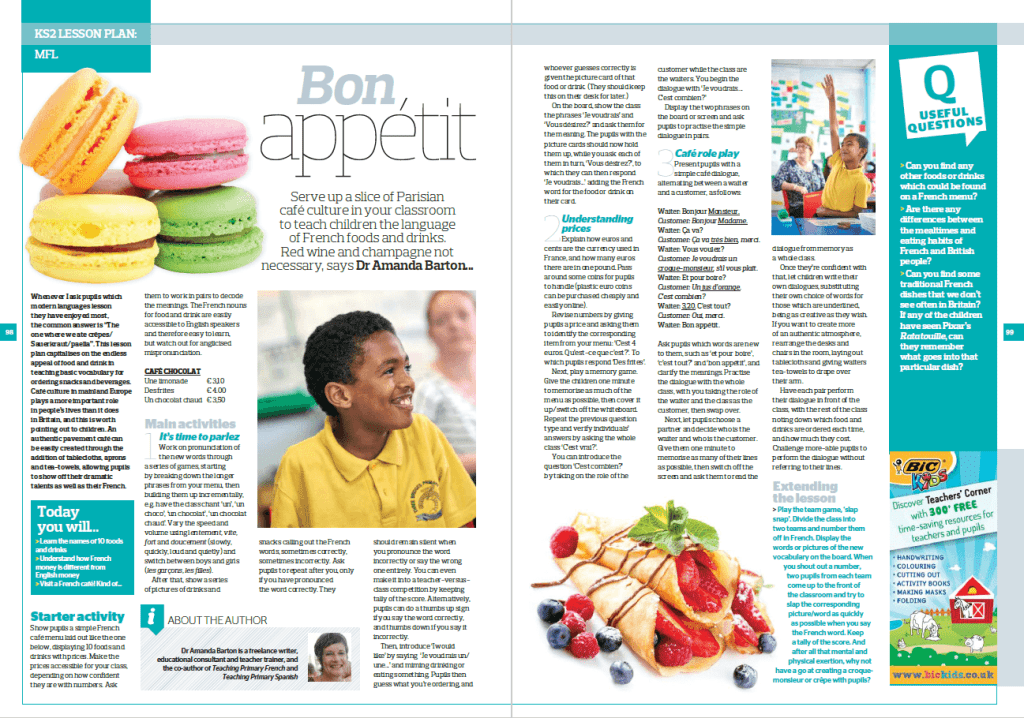
This lesson plan capitalises on the endless appeal of food and drink in teaching basic vocabulary for ordering snacks and beverages.
Café culture in mainland Europe plays a more important role in people’s lives than it does in Britain, and this is worth pointing out to children.
An authentic pavement café can be easily created through the addition of tablecloths, aprons and tea-towels, allowing pupils to show off their dramatic talents as well as their French.
Children will learn the names of 10 foods and drinks, how French money is different from English money and what it’s like to visit a French café (kind of!).
4 | Learning directions lesson plan
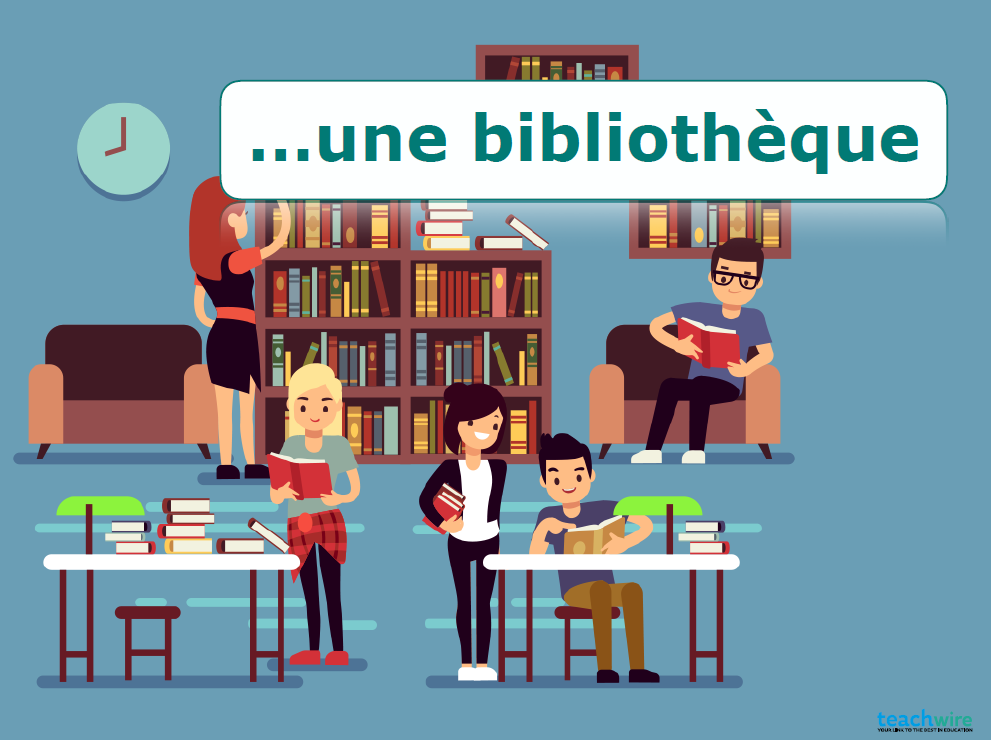
Teaching children how to ask for directions can be a lot of fun as it involves looking at life outside the classroom and creates opportunities for moving around.
Trending
If you’re feeling brave, and weather permits, make the learning more authentic by using your playground as a model town, with posters stuck to fenceposts and cones indicating buildings.
There are lots of cognates in the French words for buildings, so these shouldn’t pose a challenge, but it’s worth emphasising the pronunciation to discourage children from anglicising them. These activities can be adapted to suit any modern foreign language.
With this lesson plan (and its accompanying resources) children will learn to say the names of places in the town centre, give and ask for directions, develop listening and speaking skills and develop teamwork skills.
Download the lesson and resources here.
5 | Pets flashcards lesson
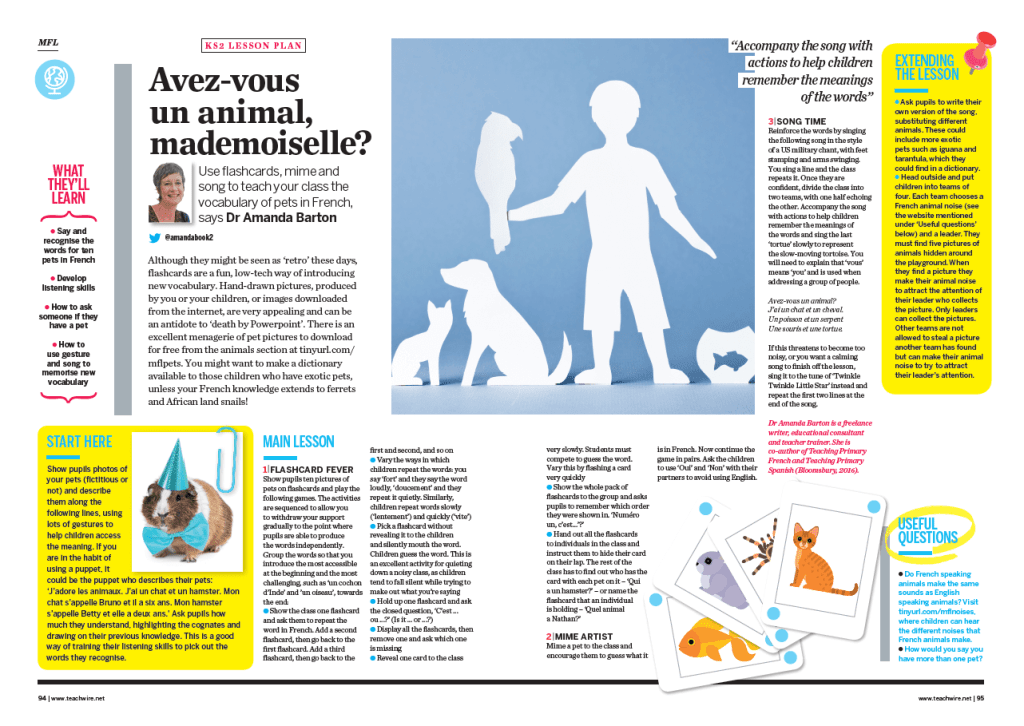
Although they might be seen as ‘retro’ these days, flashcards are a fun, low-tech way of introducing new vocabulary. Hand-drawn pictures, produced by you or your children, or images downloaded from the internet, are very appealing and can be an antidote to ‘death by PowerPoint’.
With this lesson students can say and recognise the words for 10 pets in French, develop listening skills, ask someone if they have a pet and use gesture and song to memorise new vocabulary.
You might want to make a dictionary available to those children who have exotic pets, unless your French knowledge extends to ferrets and African land snails!
6 | Cirque de France
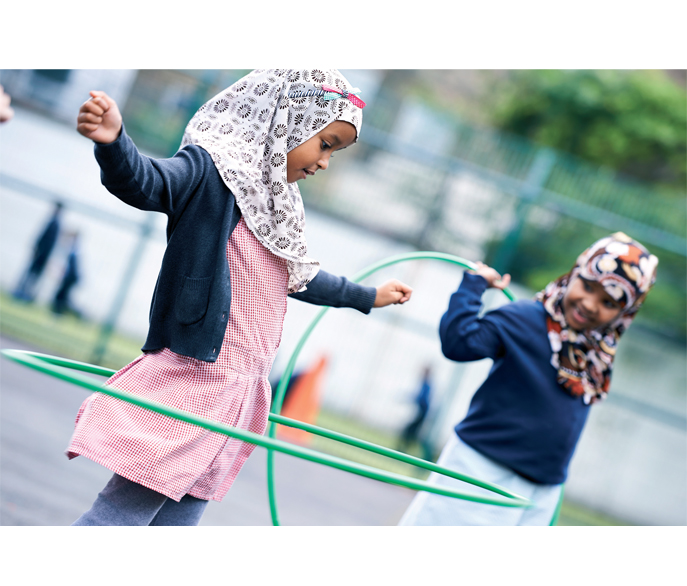
Juggling and learning a foreign language might seem like disparate skills, but both require perseverance and allow for mistakes – if you drop the ball, you just pick up where you left off. It’s an interesting metaphor to discuss with pupils but, as this lesson plan demonstrates, the connections can go far beyond this.
Using the circus as a context, language learning can be made to feel more authentic. It gives KS2 pupils the opportunity to speak spontaneously and to manipulate the vocabulary they have already mastered – two skills that should be at the heart of language lesson planning.
In this learning sequence, devised to last three lessons, communication is purposeful and not just an exercise in practising how to say your name and age – again.
7 | Five language games
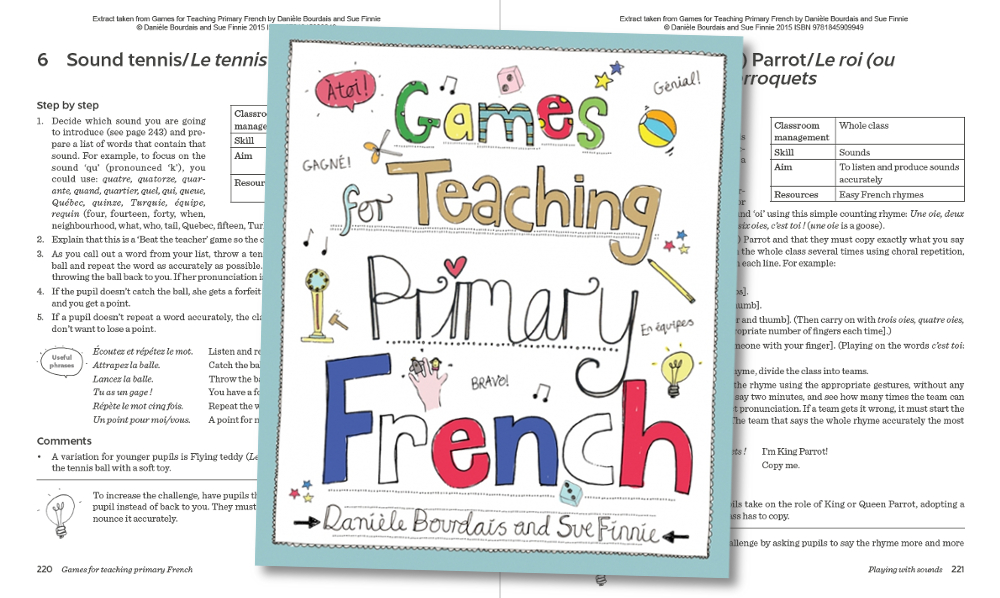
This resource is an extract from the Crown House Publication title Games for Teaching Primary French by Danièle Bourdais and Sue Finnie.
In it you’ll find five distinct activities:
- Line bingo/Loto en ligne: A variation of traditional bingo
- Liar!/Menteur!: The aim of the game is for pupils to repeat sentences only when they think they are true
- Running dictation/La dictée sportive: The aim of this game is for pupils to reconstruct a text by dictating chunks of it to each other. It works with any topic and at any level and revises vocabulary, grammar and spelling, as well as practising all four skills (listening, speaking, reading and writing)
- Sound tennis/Le tennis des sons: Classroom game involving a tennis ball or soft toy aimed getting pupis to listen and produce sounds accurately
- King (or Queen) Parrot/Le roi (ou La reine) des perroquets: The aim of this game is to provide pupils with the opportunity to learn and practise short phonetic French rhymes in a fun way
8 | Four in a row colours game
This interactive game challenges students to correctly pick four colours in a row as quickly as they can.
Click on any square and they’ll be given five possible answers to pick the correct colour in French. Get it right, that square becomes a tick. Get it wrong, it becomes a cross, making it harder to get four in a row correctly.




